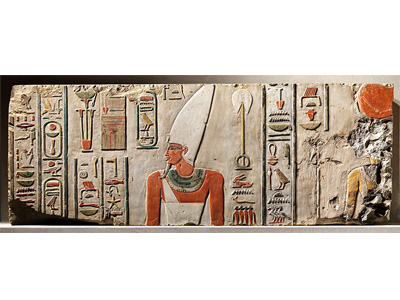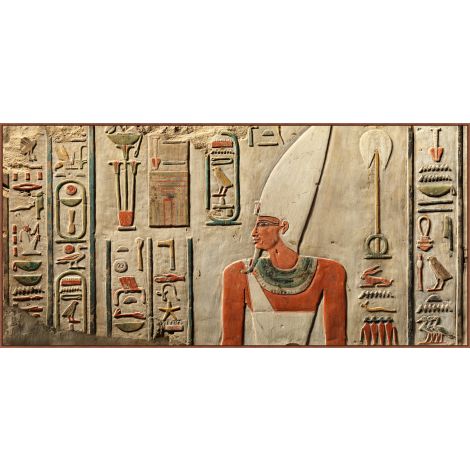Local Storage seems to be disabled in your browser.
For the best experience on our site, be sure to turn on Local Storage in your browser.
Goddess Hathor

Our Inspiration: Relief of Nebhepetre Mentuhotep II and the Goddess Hathor
From Egypt, Middle Kingdom
Limestone, paint; ca. 2010–2000 B.C.
Gift of Egypt Exploration Fund, 1907 07.230.2
King Nebhepetre Mentuhotep II was revered by the Egyptians as the ruler who reunited Egypt after the era of disunity (the First Intermediate Period) that followed the end of the Old Kingdom. Descended from a family of Theban rulers, the king built his tomb and mortuary temple at Deir el-Bahri in western Thebes. This relief was originally part of the decoration of the temple's main sanctuary that was added to the building at the end of the king's reign. The fine balance between figures and inscriptions on this block, as well as the clear outline and regular proportions of the king's image with its individualized facial features, exemplify the peak of a relief art that had developed over the decades while the vast temple complex was built and decorated.

Our Inspiration: Relief of Nebhepetre Mentuhotep II and the Goddess Hathor
From Egypt, Middle Kingdom
Limestone, paint; ca. 2010–2000 B.C.
Gift of Egypt Exploration Fund, 1907 07.230.2
King Nebhepetre Mentuhotep II was revered by the Egyptians as the ruler who reunited Egypt after the era of disunity (the First Intermediate Period) that followed the end of the Old Kingdom. Descended from a family of Theban rulers, the king built his tomb and mortuary temple at Deir el-Bahri in western Thebes. This relief was originally part of the decoration of the temple's main sanctuary that was added to the building at the end of the king's reign. The fine balance between figures and inscriptions on this block, as well as the clear outline and regular proportions of the king's image with its individualized facial features, exemplify the peak of a relief art that had developed over the decades while the vast temple complex was built and decorated.



